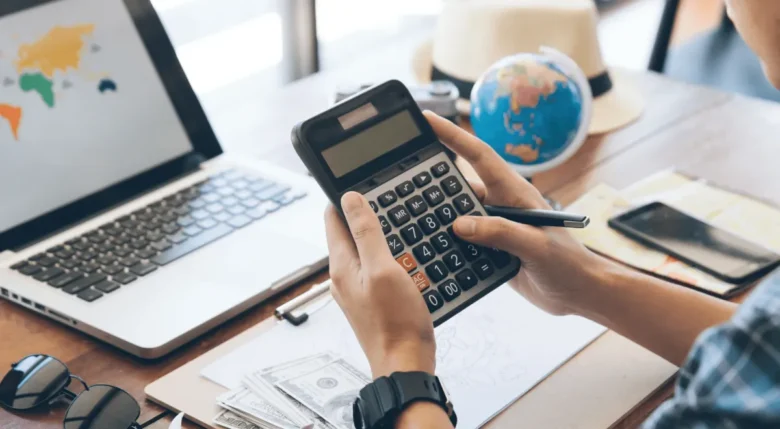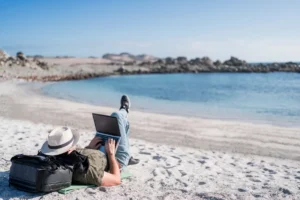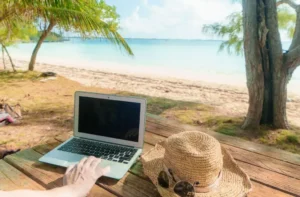At first glance, the digital nomad lifestyle seems glamorous, with exotic travel destinations, seaside coworking spaces, and a passport full of stamps. But beneath the surface lies a crucial reality: this lifestyle is only sustainable through careful financial planning. Without a thorough understanding of budgeting, your desire to travel and work can easily turn into worry, debt, and even forced repatriation. Saving money is just one aspect of a travel budget; other goals include maximizing your spending, planning for the unexpected, and creating a financial system that supports your nomadic lifestyle.
While striving to enjoy their travels, digital nomads must consider income fluctuations, currency conversions, changes in livelihood, and a financial safety net. This article discusses some well-researched, practical financial advice designed for long-term digital nomad success. If you’re ready to go beyond the basics and build true financial independence while traveling, let’s get started.
Track Every Expense:
Tracking where your money goes is the first principle for financial travel success. Spreading payments across different platforms, regions, and currencies can easily lead to a loss of control. Small expenses like a coworking card, a Grab taxi, or a cappuccino can quickly pile up. To track every transaction, you can use apps like Trail Wallet, YNAB (You Need a Budget), or simply a detailed Google Sheet. Organize your expenses into categories like accommodation, food, transportation, entertainment, and business expenses.
This transparency shows where you can save, what’s draining your finances, and how much headroom you have. A 2023 Intuit study found that people who actively monitor their spending are 2.5 times more likely to stick to their spending plan. Without measurement, there’s no control. Daily tracking may seem tedious at first, but it will eventually become a rewarding habit.
Choose a Travel Destination that Fits Your Budget:
While some digital nomad hotspots can help you maximize your money, others will drain your bank account. If you’re trying to save as much as possible or are on a tight budget, your choice of destination matters more than you might think. In Southeast Asia (like Vietnam, Thailand, and Indonesia), Eastern Europe (like Georgia, Romania, and Bulgaria), and parts of Central and South America, you can enjoy a high standard of living for a fraction of the cost.
If you plan to travel to affordable destinations, you can live a luxurious life while maintaining your financial stability. Numbeo and NomadList are excellent tools for comparing average living costs. While $1,500 a month might not seem like much in Lisbon, it feels like a lot in Ubud. This strategy allows you to travel further, reduce stress, and even invest in your future without sacrificing your sense of adventure. Instead of taxing your wallet, you can let your destination shine.
Build Multiple Income Streams for Stability:
Income unpredictability is one of the biggest financial challenges for digital nomads. Online business owners, remote workers, and freelancers often struggle with unstable cash flow. Create multiple income streams to cover income shortfalls. Freelancing, affiliate marketing, part-time remote work, passive income from digital products, and consulting services are just a few examples. Even a small supplemental income stream can provide a buffer during slow periods.
According to a recent Upwork survey, freelancers with two or more income streams report 38% more confidence in their future financial situation than those with just one. Diversifying your income is crucial for both nomads and investors. The goal is to build resilience, not to work constantly. With a diverse income, you can manage emergencies, invest in better equipment or travel experiences, and say yes to every opportunity without worrying about money. In this mobile lifestyle, income flexibility is the first step toward financial stability.
Build a Reasonable Emergency Fund and Store It Safely:
When you’re away from home, an emergency fund is crucial; it’s your lifeline. Medical emergencies, visa issues, lost equipment, or unexpected departures can all happen at any time. Financial experts recommend saving at least three to six months’ worth of living expenses in a separate, easily accessible account. Given the unpredictability of travel, this amount can be even higher for digital nomads. Set up a monthly savings account and only use it when a true emergency arises.
According to Bankrate, more than 56% of millennials don’t have enough money to cover a $1,000 emergency. Don’t become one of those statistics. A strong safety net gives you the confidence to try new things, seize opportunities, and travel to far-flung locations. Without security, freedom becomes fragile. With the help of an emergency fund, your dream of becoming a digital nomad can become a sustainable, long-term reality.
Leverage Travel Credit Cards and Bank Accounts Designed for Nomads:
Take advantage of bank accounts and travel credit cards designed specifically for nomads. Currency exchange fees, ATM fees, and exchange rate losses can quietly deplete your budget. That’s why having the right financial tools is just as important as owning the ideal laptop. Look for travel credit cards like Capital One Venture or Chase Sapphire Preferred, which offer generous rewards, no currency exchange fees, and strong fraud protection.
Combine them with digital banks like Wise, Revolut, or N26, which allow you to hold multiple currencies and exchange them at low rates. These tools can simplify your international finances and save you money at the same time. Studies indicate that digital nomads who optimize their banking save an average of $400 to $700 per year in fees and unfavorable exchange rates. Additionally, check your international credit card limits and purchase travel insurance. Your financial system should be as simple and convenient as you are. Think of it as your digital wallet: portable, globally accessible, and always available.
Conclusion:
The goal of budget-conscious travel is to build a financial structure that supports your independent life, not to make compromises or constantly worry about your expenses. As a digital nomad, your circumstances, income, and expenses are constantly changing. Conscious financial management is the only way to thrive in this fast-paced world. Track your expenses, choose your trips carefully, create multiple income streams, build an emergency fund, and use smart financial tools to build a solid foundation for long-term travel and success. Don’t let financial pressures hold you back from traveling. When you develop the right habits and practices, money becomes a resource, not a limitation. Managing your finances wisely is the first step toward achieving your goal of “working from anywhere.” Remember, freedom isn’t just about movement; it also includes financial security and peace of mind, wherever you are.
FAQs:
1. How much should a digital nomad save before traveling?
Ideally, you should have saved enough for an emergency fund, a starting place to stay, essential travel expenses, and three to six months’ worth of living expenses before departure.
2. Which apps are best for tracking travel expenses?
Spendee, YNAB, Expensify, and Trail Wallet are a few excellent options. They offer convenient and rapid currency conversions and help you categorize and track your expenses in real time.
3. Is remote work or freelancing better?
Both have their pros and cons. Freelancing offers flexibility but reduces financial stability. While remote work offers generous and regular benefits, it often requires a strict schedule.
4. How can I avoid ATM and currency exchange fees?
You can use digital banks like Wise or Revolut, which offer low currency exchange fees and access to international ATMs, as well as travel-friendly credit cards that don’t charge currency exchange fees.
5. How should I handle taxes as a digital nomad?
Speak with a tax advisor who is well-versed in international tax matters. Remote workers can file their international taxes with the help of tools like Nomad Tax and Xolo.




